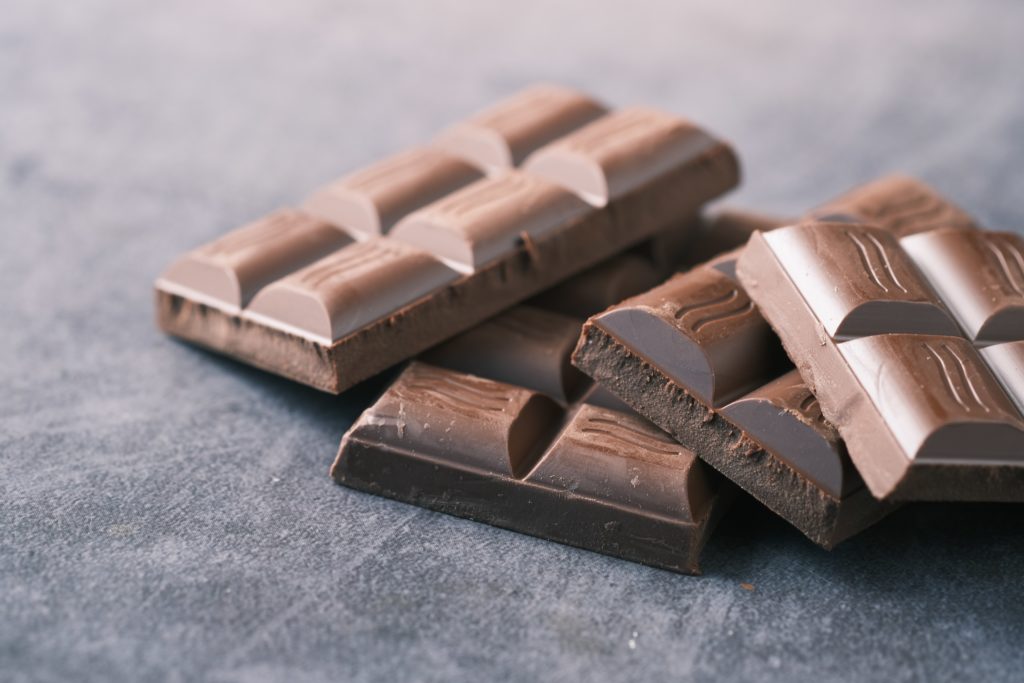I went vegan in 2012, and well, to put it lightly, the options back then were limited. Today we have all kinds of alternatives for proteins, cheeses, and milk, but especially for snacks. There are alternatives for everything, pastries, chips, ice cream, candy, and even chocolate, from plant-based milk chocolates to truffles and chocolate candy bars. When I first went vegan, brands had yet to catch up to the possibilities the plant-based food market held. So, like any other vegan with an insatiable sweet tooth, I became obsessed with dark chocolate.
Over the years, I have tried many brands of dark chocolate. I have accumulated a list of favorites that add a decadent moment of joy to my day. As time went on and I only ate dark chocolate, my palate changed, and I found myself unable to enjoy plant-based milk chocolates as they were suddenly too sweet (the irony of this paired with my sweet tooth does not escape me), so I was devastated when Consumer Reports released a study that showed 23 out of 28 dark chocolate bars tested contained levels of heavy metals that would put an adult over the acceptable level of daily intake in just a single ounce.

The study was funded through the As You Sow settlement by the National Confectioners Association (NCA). This settlement requires chocolate brands to print warning labels on packaging in California if they contain over the approved limits of heavy metals. It is important to note that California has much stricter health regulations than the federal Food and Drug Administration. After the California Court established guidelines, the NCA agreed to fund the research to determine the levels of heavy metals, especially lead and cadmium, found across several chocolate brands.
Researchers found that 23 out of 28 brands have at least one heavy metal over the established level. Some brands with high lead levels include Hershey’s, Lindt, Godiva, and Trader Joe’s. While a few of the brands with high levels of cadmium are Dove, Lindt, and Alter Eco. A few brands even had abnormally high levels of both metals, with Trader Joe’s and Theo chocolates making the list. When asked for comments, many brands doubled down. They claimed that their chocolates met all manufacturing standards and were safe for consumption, while others did not immediately comment.
Heavy metal consumption affects children and pregnant women the most due to developmental repercussions. Still, the higher levels of consumption, the more anyone can be affected. Overconsumption of lead can lead to anemia, kidney or brain damage, and overall weakness. In comparison, excess cadmium can cause stomach irritation as well as vomiting and diarrhea. Although many people don’t consume enough dark chocolate regularly for this to be a looming problem, other foods also contain these heavy metals (such as sweet potatoes, shellfish, and mushrooms), which can quickly add up.
So, how did this happen? After all, there were quite a few brands on the list that I trusted to care for me as the consumer alongside their dedicated mission to sustainable farming practices and Earth-friendly initiatives. Cadmium, in particular, is hard to control. The plant takes this metal up from the surrounding soil, which is why it’s also common in root vegetables. On the other hand, lead is usually found on the cocoa beans themselves, meaning it contaminates them after harvest during drying or processing.
With no company wanting to have to put warning labels on their food, researchers at Consumer Reports are optimistic about heavy metal levels coming down in the future. There are a few ways to minimize exposure to metals. Producers can limit lead contamination by protecting the beans during dry time to avoid dust landing on the beans and increasing cleaning protocols to remove any dust before processing. Cadmium, as I mentioned, is a little trickier, but testing the soil before planting, replacing older cacao trees with new ones, and replacing some of the soil to balance the levels are all options.
Although I don’t plan on cutting dark chocolate out of my life (I did say my sweet tooth is insatiable), I do plan on making some changes in my consumption habits. First, I’ll buy more of the five brands found to have safer levels until new tests are released. These were Mast, Taza, Ghirardelli, and Valhrona. Johns Hopkins Medicine toxicologist Andrew Stolbach shared in an interview with NPR that because California’s guidelines are very conservative to protect those with higher health risks, moderate consumption is perfectly safe for the average chocolate enjoyer. He also mentioned that a diet high in calcium and iron blocks lead and cadmium absorption. So, it looks like I’ll have a big bowl of leafy greens with a side of chocolate in the future.
Get more like this—Sign up for our daily inspirational newsletter for exclusive content!
____
Photo by Towfiqu barbhuiya on Unsplash




